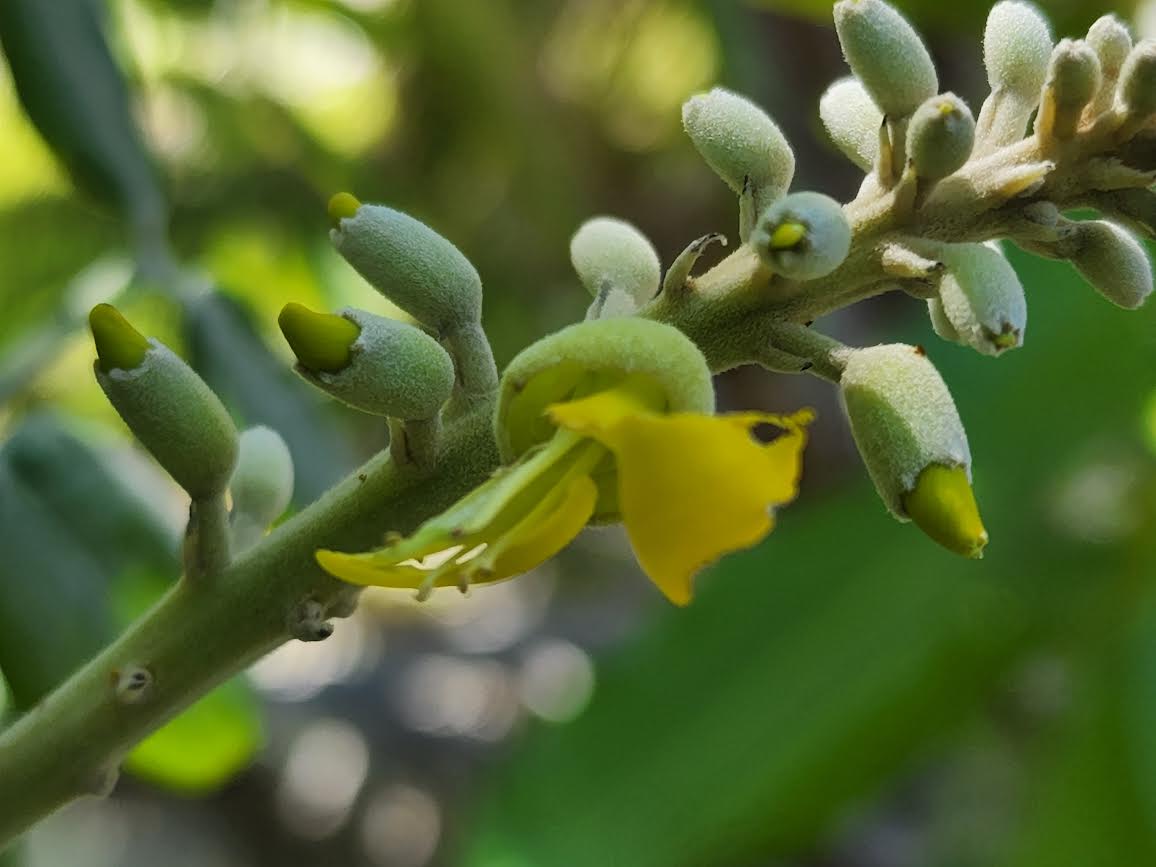Te Ipukarea Society: Trees of Palmerston Island
Saturday 26 August 2023 | Written by Te Ipukarea Society | Published in Environment, National

Palmerston Atoll is made up of six main Motu and a number of sand cays dotted around a lagoon teeming with marine life. There is no airstrip. A cargo boat visits every few months to ferry passengers, food supply, gas and fuel.
As well as holding a rich marine ecosystem filled with parrot fish, sharks and turtles, the plants found on land also hold significant history and mysteries.
The five-week long rat eradication project on Palmerston has provided us with a valuable opportunity to look at biodiversity present on the island. Anything from insects to plants and potential invasive species. Here we are talking about some of the trees that can be found there.
As you approach Palmerston from sea, the slither of slightly raised land includes three obvious high features in the center of Home Motu, where residents live. It is not until you are on the island that the three points can be identified as tall pine trees, most likely New Caledonian Pines, which are similar to the more well-known Norfolk pines. These were planted by Carl Marsters in front of his property in the 1960s.
Palmerston’s central vegetation is made up largely of tall tamanu, ano, and coconut.
There is also one unidentified tree, tall like a chestnut tree but has not fruited or flowered recently to confirm its identity.
Its leaves are long and tear drop shaped, a clear difference from the more oval shaped tamanu leaves that surround the unidentifiable tree.
A chat with Edward Marsters and Fiftieth Rowe reveals the tree was planted by their great grandmother Akatu Dean also known as Tutu Marsters in the 1960s, but cannot confirm the species.
Simon Masters recalls seeing the tree produce a red seed once that stained really easily and thought perhaps the tree was planted to make red dye. A pressing of the leaves will be brought back to Rarotonga for further analysis from the Natural Heritage Trust.
The coastline is home to coconut trees, Toa ironwood and Kōpara, or Rakau Pakari as known by the Palmerstonions.
The knowledge stick, translated to English, is well known amongst the younger children as a disciplinary stick, ouch.
One particular shrub however noticed on the south side of Home Motu by Fiftith and Will Rowe in 2018 is the only one of its kind.
Po’utukava, Silverbush Sophora tomentosa is a flowering yellow shrub up to 6m high with pods and glossy oval leaves.
There are no records of this particular Po’utukava being planted on Palmerston, so perhaps a seed pod was brought over by sea.
A closer look on the Cook Islands Biodiversity Database highlights the Po’utukava, is a native and is present across the majority of southern group islands. It is also found across the Pacific, including most of the high archipelagoes of Polynesia.
In a 1992 book on Pacific plants by well known botanist Art Whistler , he writes “the seeds are sometimes strung into ei’s, the leaves are employed for native medicines and the stems are burned for firewood”.
With the Po’utukava mainly growing on sandy beaches, it also acts as a natural coastal erosion control. Because of its coastal stability properties, it has been used with other native trees at the Avana geotextile sand bag coastal protection site on Rarotonga.
Keep an eye out in the coming weeks for more information from our expedition to Palmerston.












































